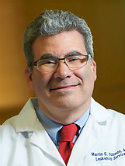| Abstract: |
BACKGROUND: Allogeneic hematopoietic cell transplantation (HCT) offers curative potential to a number of older patients with acute myeloid leukemia (AML) in their first complete remission. However, there are limited data in the literature concerning post-HCT outcomes for older patients in their second complete remission (CR2). METHODS: The purpose of the current study was to retrospectively investigate within the Center for International Blood and Marrow Transplant Research database parameters influencing posttransplant outcomes for patients 60 years of age or older undergoing HCT for AML in CR2. RESULTS: In total, 196 patients from 78 centers were identified; the median age was 64 years (range, 60-78 years). Seventy-one percent had a Karnofsky performance status ≥ 90 at the time of HCT. Reduced-intensity conditioning regimens were used in 159 patients (81%). A univariate analysis demonstrated a 3-year overall survival (OS) rate of 42% (95% confidence interval [CI], 35%-49%), a leukemia-free survival rate of 37% (95% CI, 30%-44%), a cumulative incidence of nonrelapse mortality of 25% (95% CI, 19%-32%), and a cumulative incidence of relapse (CIR) of 38% (95% CI, 31%-45%). A multivariate analysis demonstrated that cytogenetic risk was the only independent risk factor for OS (P =.023) with a hazard ratio (HR) of 1.14 (95% CI, 0.59-2.19) for intermediate-risk cytogenetics and an HR of 2.32 (95% CI, 1.05-5.14) for unfavorable-risk cytogenetics. For CIR, cytogenetic risk was also the only independent prognostic factor (P =.01) with an HR of 1.10 (95% CI, 0.47-2.56) for intermediate-risk cytogenetics and an HR of 2.98 (95% CI, 1.11-8.00) for unfavorable-risk cytogenetics. CONCLUSIONS: Allogeneic HCT is a curative treatment option for older patients with AML in CR2, particularly for those with favorable or intermediate cytogenetic risk. Cancer 2017;123:2035–2042. © 2017 American Cancer Society. © 2017 American Cancer Society |




